A male Monarch butterfly, tag number WMX658, paused Saturday morning October 1 around 11 AM on a fresh Frostweed bloom along the Llano River. Netted and retrieved, the faded Monarch was photographed, then released to set sail for his flight to Mexico.
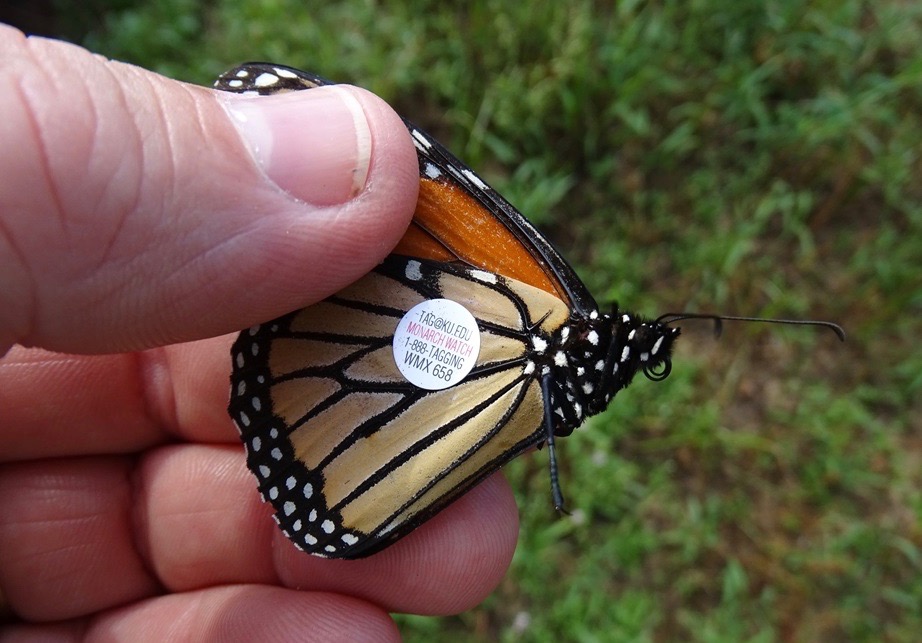
Justin Roach’s WMX658 male Monarch, 9/22 in Tishomingo, Oklahoma. Photo by Justin Roach
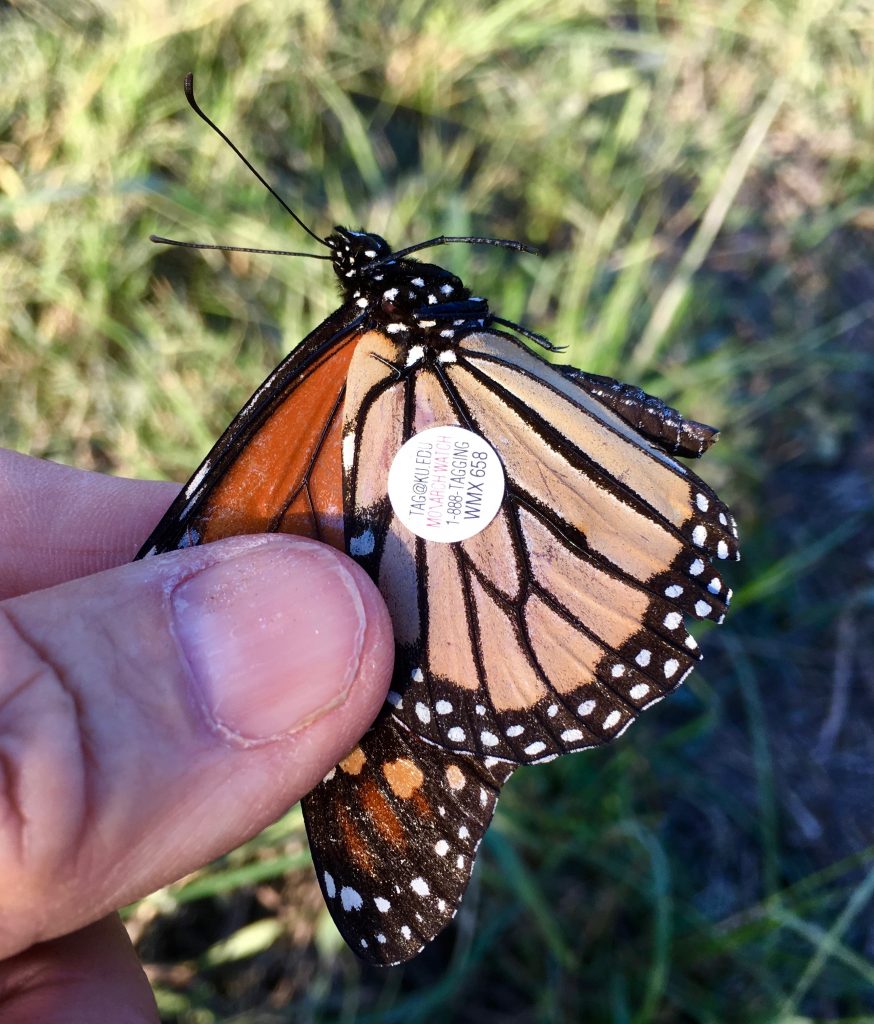
About 350 miles and nine days later, WMX658 was netted on the Llano River near London, Texas. Photo by Monika Maeckle
Thanks to the miracles of social media and the tight-knit Monarch butterfly community, it soon became apparent that Mr. WMX658 was tagged at the Tishomingo National Wildlife Refuge in southern Oklahoma on September 22 about 10:30 AM by Justin Roach, wildlife biologist for the US Fish and Wildlife Service refuge there.
Roach said by phone that WMX658 was one of 15 butterflies tagged that day. About 350 miles later, I netted the butterfly in Kimble County near London, Texas.
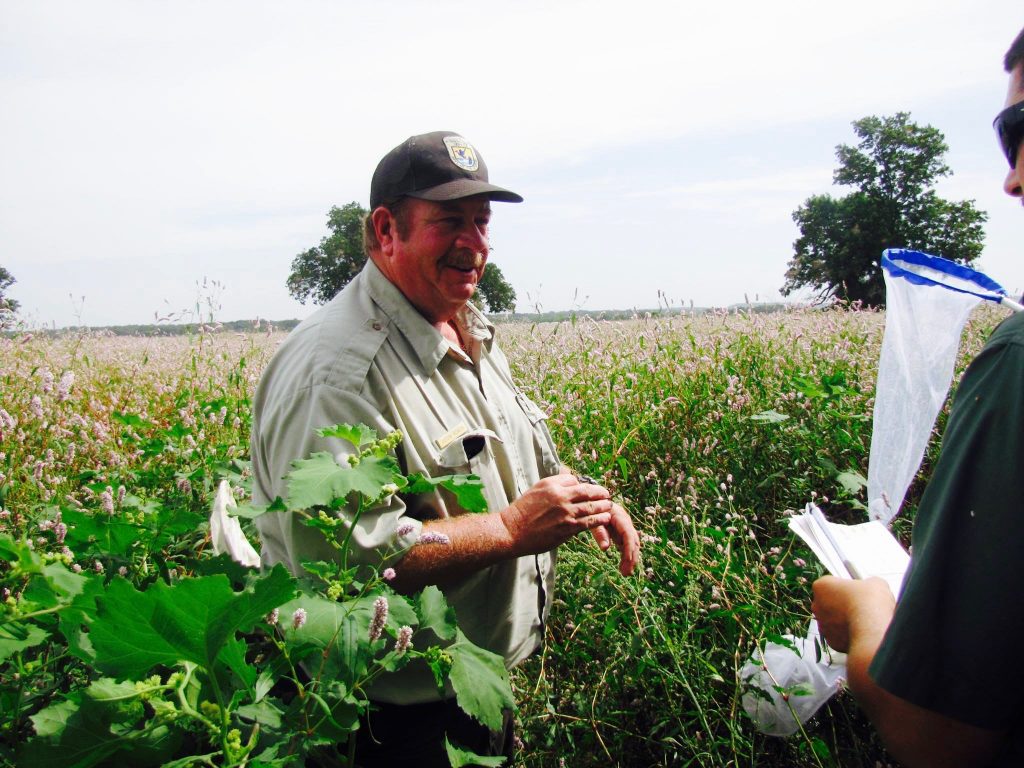
Justin Roach, wildlife biologist at the Tishomingo National Wildlife Refuge in southern Oklahoma tagging Monarchs in early September. Photo by Joanne Ryan
That means WMX658 traveled about 44 miles per day, an impressive clip, to reach our nectar patch along the Llano. Hopefully, he’ll have fueled up enough in Texas to carry him the remaining 920 miles to the overwintering roosts in Mexico.
“It seems the migration is more consistent this year than I’ve ever seen. Every day there’s been a few,” said Roach, who usually tags between 100-200 butterflies annually. The day WMX658 was tagged, butterflies were nectaring on Smartweed, a member of the Polygonum family. Roach said a school outing was planned for that Thursday, but somehow the kids couldn’t make it so he just tagged with staff.
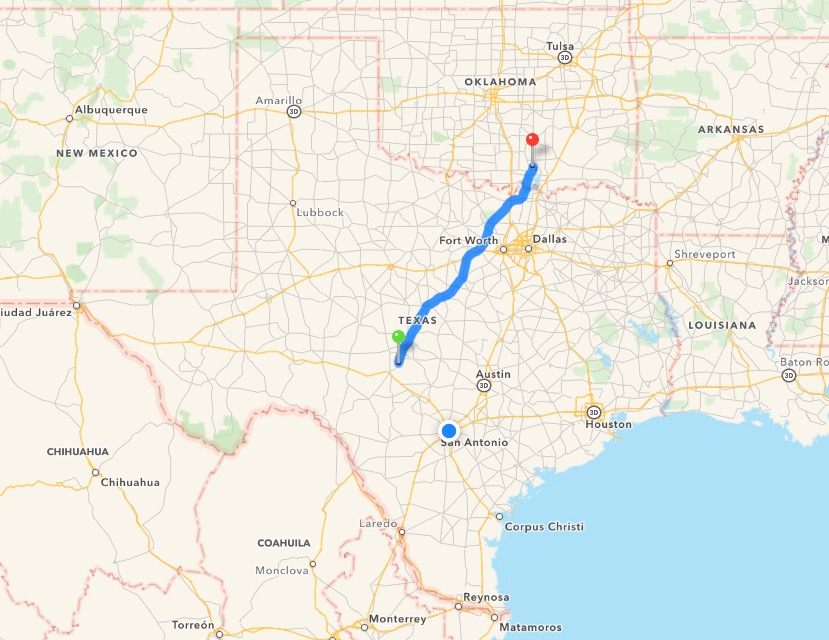
WMX658 left Tishomingo,Oklahoma on September 22, arriving nine days later 350 miles south on the Llano River. Graphic via Google
Having tagged about 1,000 Monarchs since 1997, Roach has had two recoveries in Mexico, where the butterflies are typically found on the forest floor after having made the full trip to Michoacán. This was the first time someone found a Monarch he had tagged and reported it live.
It was a first for me as well. In 11 years of tagging more than 3,000 Monarch butterflies with 29 recoveries, I had never netted a Monarch tagged elsewhere.
Our Oklahoma Monarch was just one of about two dozen spotted and 11 tagged on the Llano this weekend–all males. Just a week prior, on September 26, more than five inches of rain fell in the Texas Hill Country and parts of South Texas. The storm system left the landscape thoroughly drenched and primed for sustaining late season blooms for peak migration visitors later this month.
Many Swamp milkweed stands, Asclepius incarnata, that exhibited packs of aphids, milkweed beetles and bugs just two weeks ago, were now washed clean, losing lower milkweed leaves to “drowning” by water levels that rose 4 – 6 feet. Seedpods have replaced the pink flowers while other late season bloomers drew literally thousands of butterflies.
- Queens on Frostweed, Llano River
- Bumble bee on Frostweed, Llano River
- Eastern Swallowtail on Frostweed, Llano River
- Gulf Fritillary on Frostweed, Llano River
- Gulf Fritillaries and Monarch gather on Frostweed, Llano River
- Grey hairstreaks on Frostweed, Llano River
- Buckeye on Frostweed, Llano River
--all photos by Monika Maeckle
Frostweed, Verbesina virginica, was a favorite draw for Queens, Spangled, Gulf and other fritillaries, Giant, Pipevine and Eastern Swallowtails, skippers, snouts, sulphurs–everyone swarmed to the nectar fest that the recent weather pattern has made possible. And the wilted, yellowed, washed out milkweed leaves didn’t stop Monarchs and Queens from laying their eggs on remaining healthy foliage. At least one more hatch will occur before peak migration arrives the last two weeks of October.
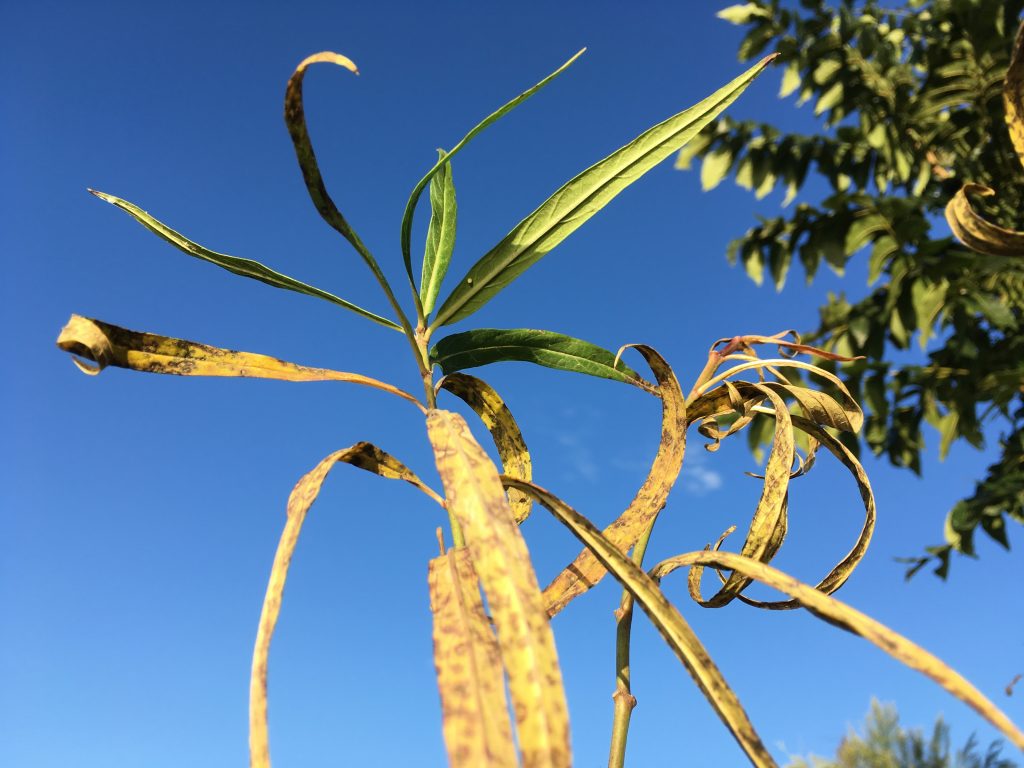
River rises six feet and drowns your host plant? No problem. Monarchs and Queens find the good foliage to deposit their eggs. Photo by Monika Maeckle
The snout-nosed butterfly invasion that hit us two weeks ago seems to bode well for butterflies in general. While the snouts were not quite as obvious this weekend at the ranch, they made a repeat–even exaggerated appearance in San Antonio midweek.
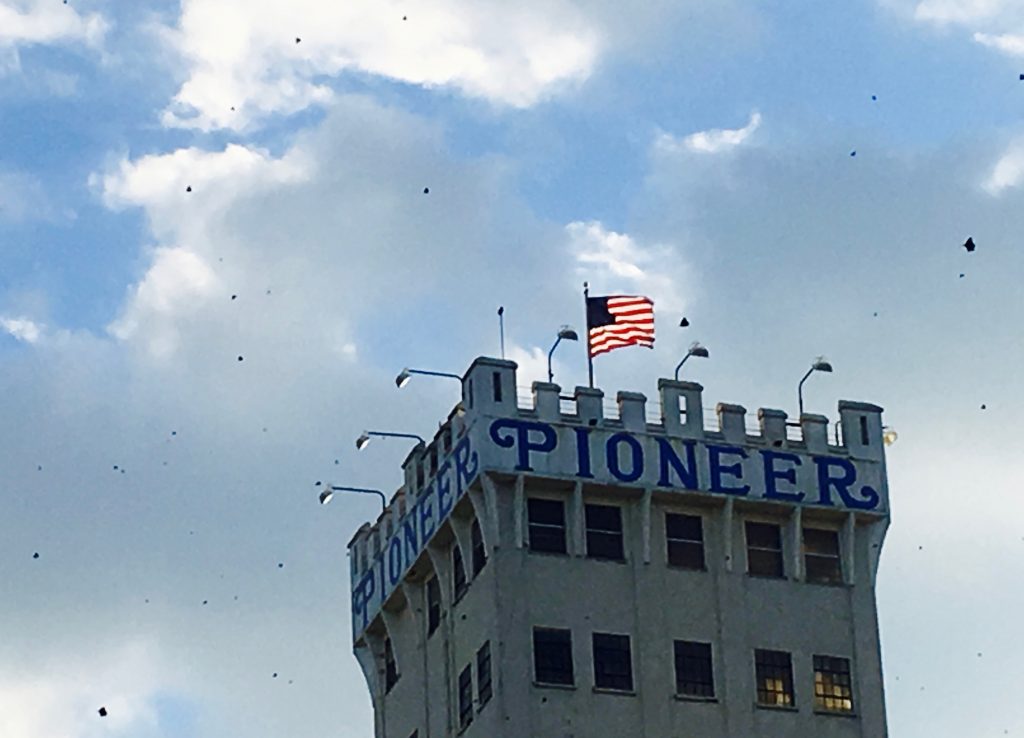
The snouts returned to invade downtown San Antonio again last week. The weather has been perfect for butterflies. Photo by Monika Maeckle
The small, orange-and-black brushfooted butterflies made headlines in early September because of their staggering presence. Just last Thursday, on September 29, literally millions of the small orange and black flyers filled the skies of downtown San Antonio, clogging car grills, spattering windshields, and confusing many who thought they were Monarchs.
“I looked outside and it was like a butterfly highway,” said Rebecca Guererro, a stylist at Mint Salon in downtown San Antonio on Thursday.
Monarchs have begun showing up in steady trickles in these parts just in the last week. The storied migrants were pushed south by a recent cold front and the dry-wet weather has set the stage for a bounty of nectar.
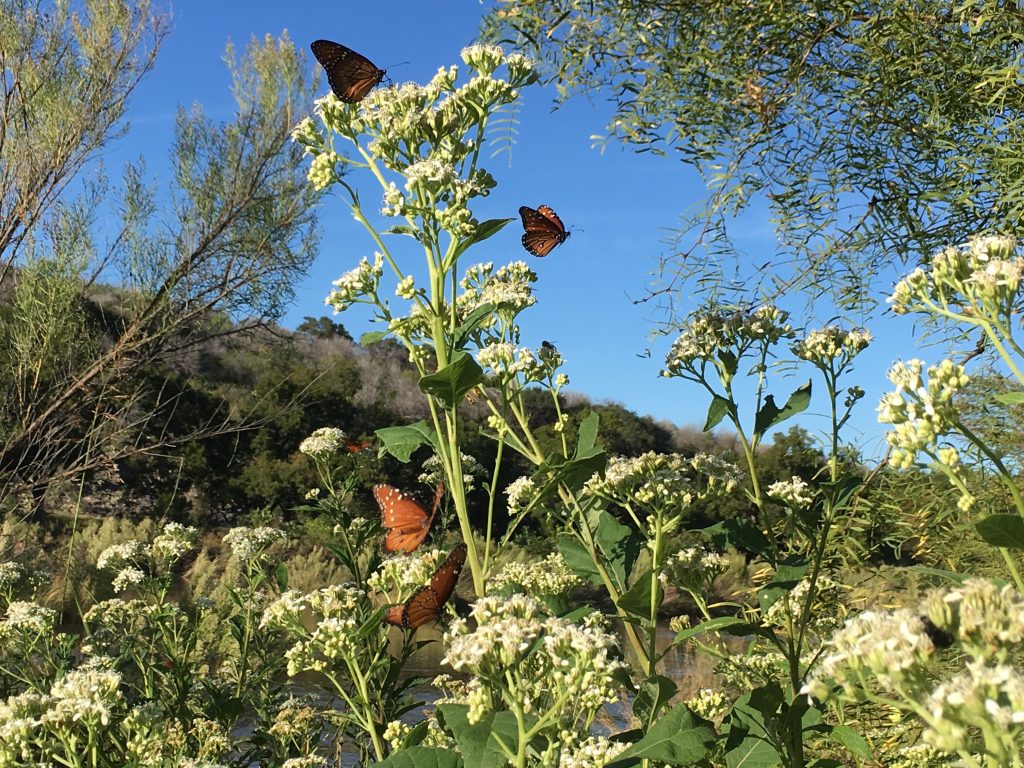
Queens on Frostweed, Llano River Photo by Monika Maeckle
A kayak tour of the Llano revealed no caterpillars this trip, although plenty of Queen and Monarch eggs were present on the mud-coated Swamp milkweeds that bowed to the floodwaters which rose about six feet.
Dr. Chip Taylor of Monarch Watch issued a migration update on September 26 predicting a late migration this year.
“A while back I pointed out the probability that the migration would be late and long this year. That is likely to be the case,” said Taylor, pointing to hot weather as the cause. “Last week was a scorcher through much of the midwest with temperatures in the 90s and high-80s over a broad area. The migration advances slowly, if at all, under these conditions. The ideal temperatures for the migrants are in the 70s and 60s,” he said.
The Journey North website reported streams of Monarchs heading south through the central and eastern flyways. The site attributed the movement to a cold front that “dropped down from the north and finally ended the unseasonably hot weather — with associated south winds — that have been holding the butterflies back,” wrote Elizabeth Howard, founder of Journey North, in last week’s Thursday migration newsletter. Howard cited peak flights along the ridges of the Appalachian Mountains over the weekend as “the first strong pulse in the Eastern Flyway.”
Related posts:
- Snout-nosed butterfly invasion returns to South Texas
- New study: late season nectar plantsmore important than milkweed to Monarch migration
- Urban Butterfly Garden Brings Monarchs and Swallowtails to your Front Yard
- Should You Bring in a Late Season Caterpillar into Your Home?
- How to Tell Queens from Monarchs
- How to Raise Monarch Butterflies at Home (First of Two Parts)
- Coming soon: Grupo Mexico copper mine in heart of Monarch butterfly roosting sites?
- Scientists try to assess Monarch butterfly mortality after Mexican freeze
- At least 1.5 million Monarch butterflies perish in freak Mexican snowstorm
- Good news! Monarch butterfly population triples
- Thanks, climate change! 9.5-inch Llano River rain dump exemplifies extreme weathe
- Resilience Required: Climate Change Turns up the Heat in the Butterfly Garden
- Mighty Monarch butterflies brave south winds, Hurricane Patricia to arrive in Mexico
- Will the Monarch Migration Become Extinct?
Like what you’re reading? Don’t miss a single post from the Texas Butterfly Ranch. Sign up for email delivery, like us on Facebook, or follow us on Twitter, @monikam.

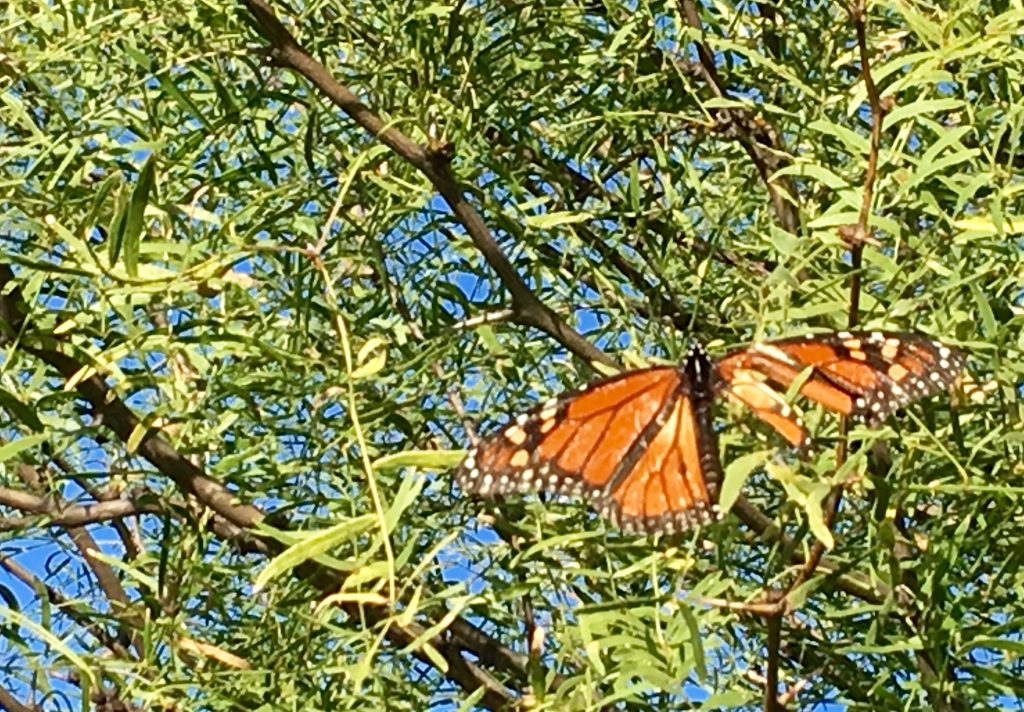


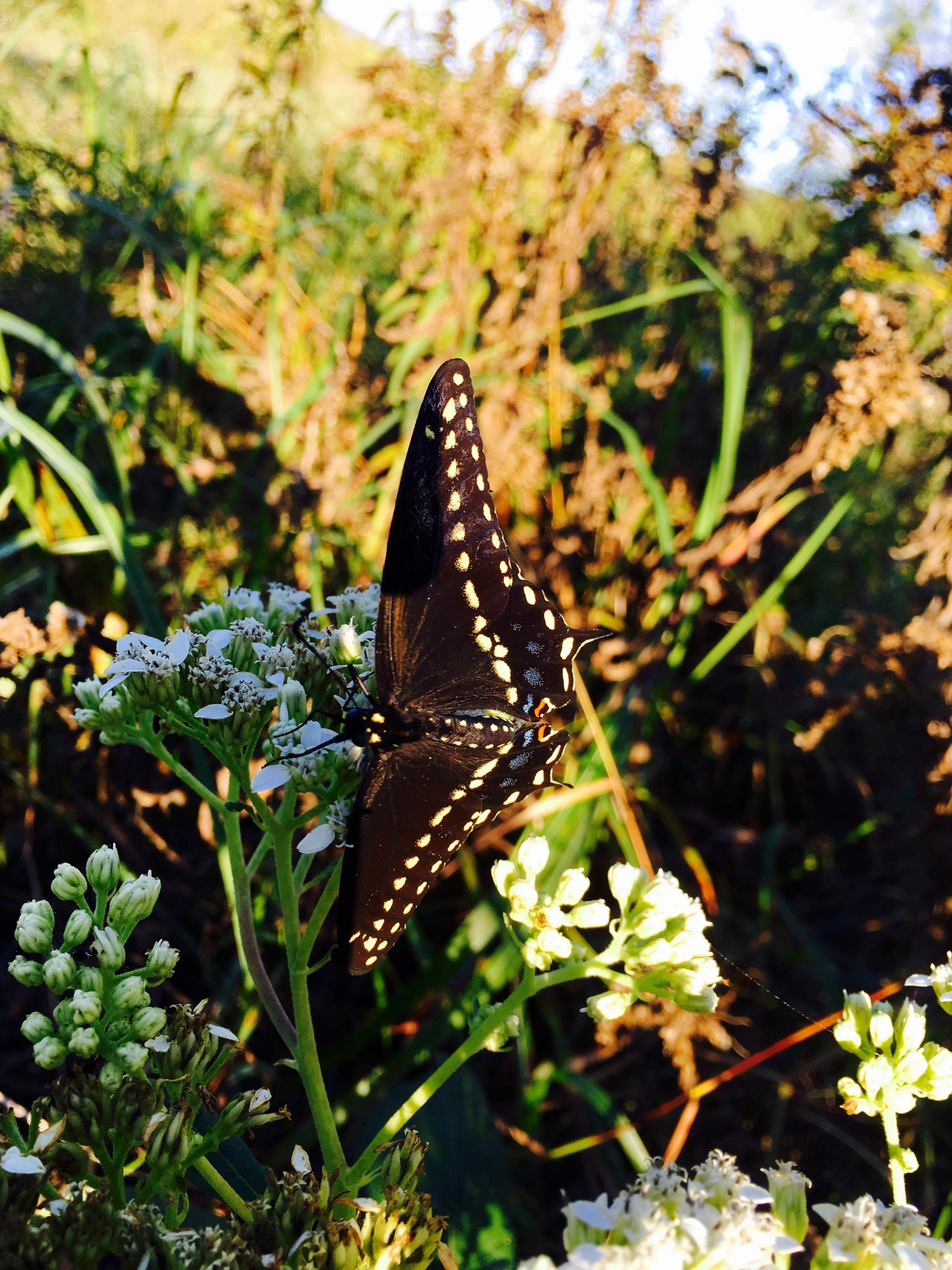
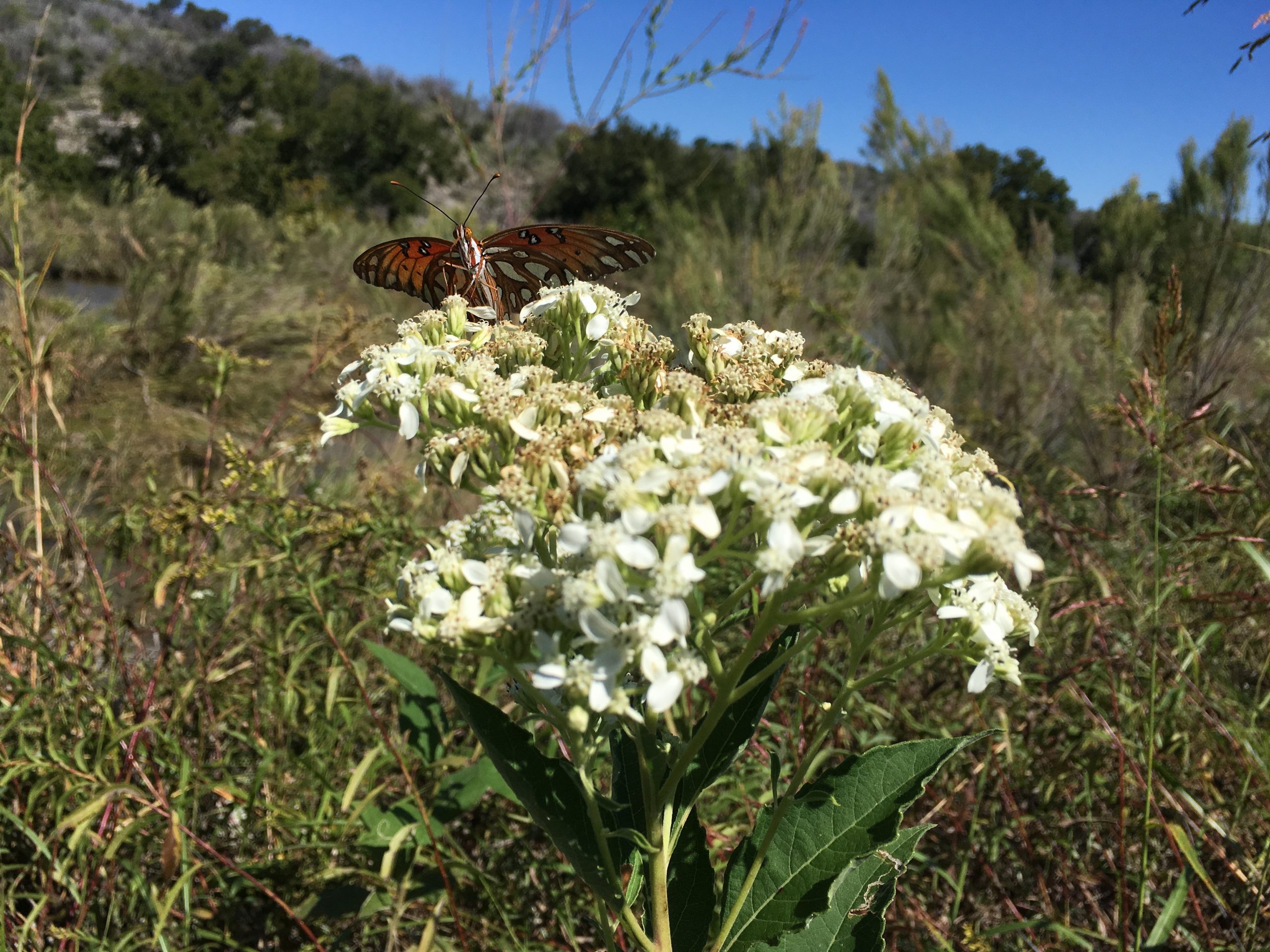
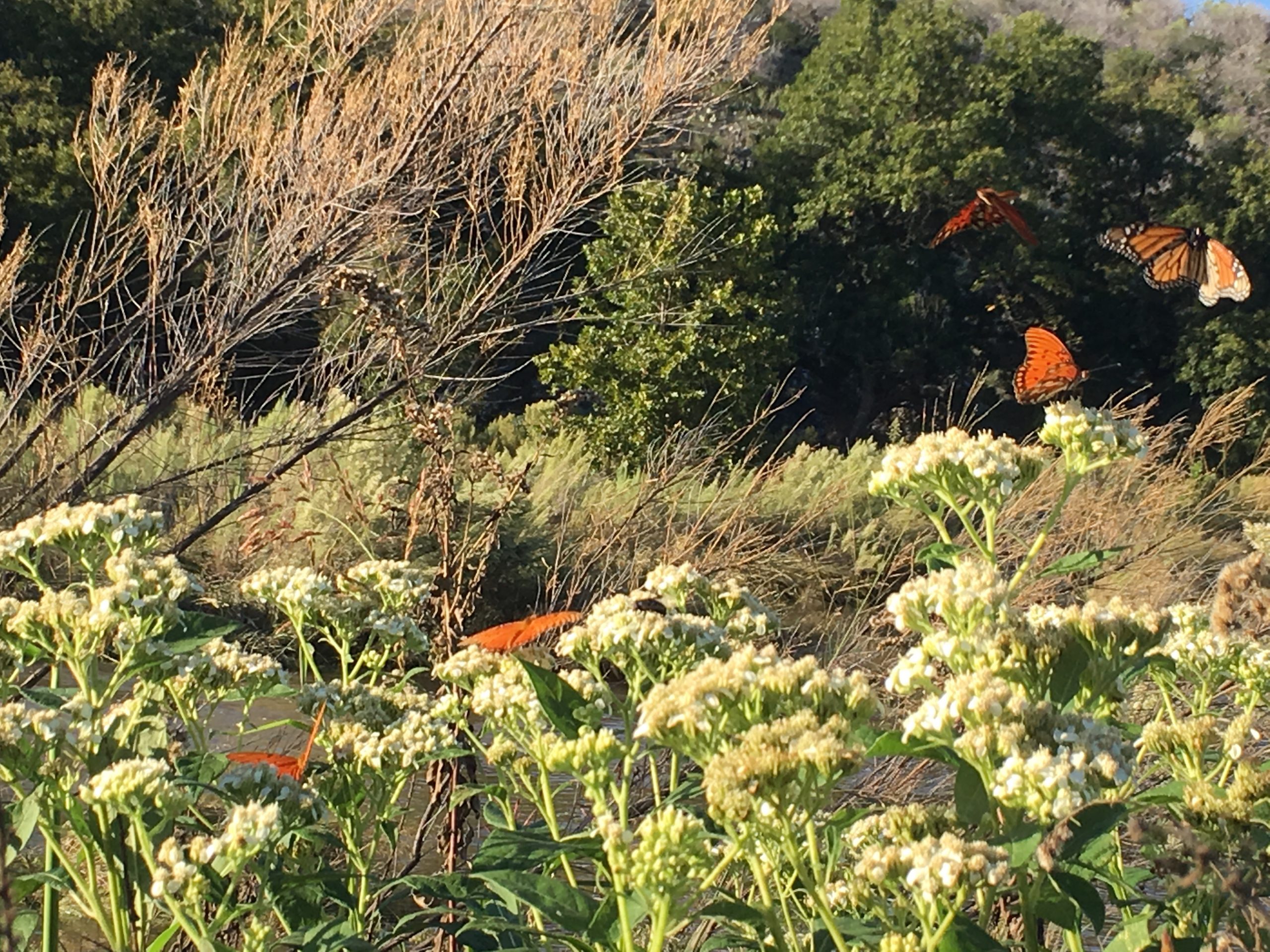
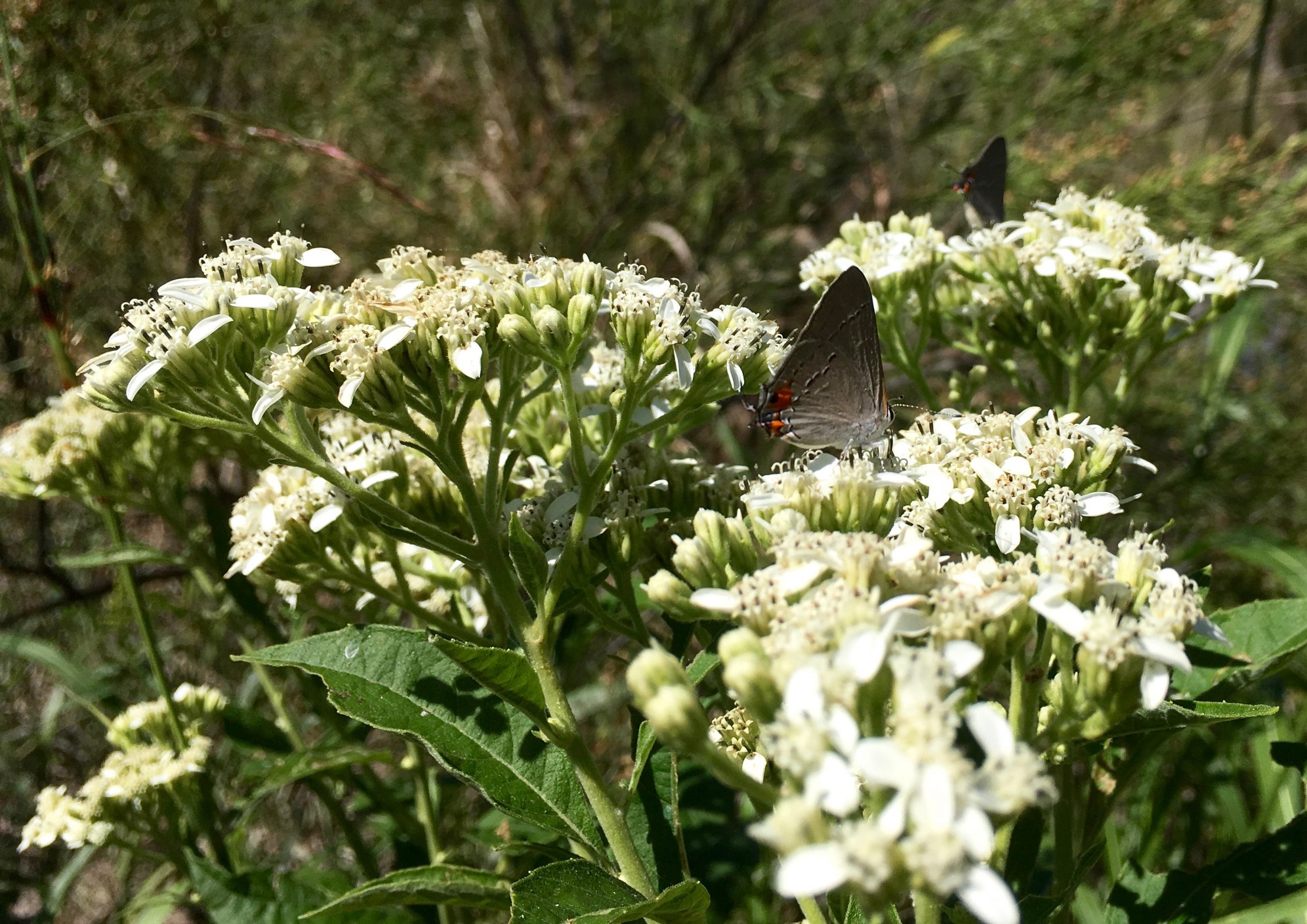

How does he know where it was tagged? I found/photographed a tagged Monarch up here in IL. I called in the tag number but was told that since tags were still being sent out….they couldn’t tell me where my butterfly had been tagged from. I would really like to know
Besides calling in the tag number, you can put an email on the DPLEX list announcing that you found a certain tag, use social media like Facebook and Twitter, and call in the tag number. I know a lot of folks in the Monarch community, so that helps, too. There’s also a new Facebook page called Migrant Monarch Tag reports–https://www.facebook.com/groups/1453716944645673/?ref=ts&fref=ts . Good luck! –MM
Thanks much!